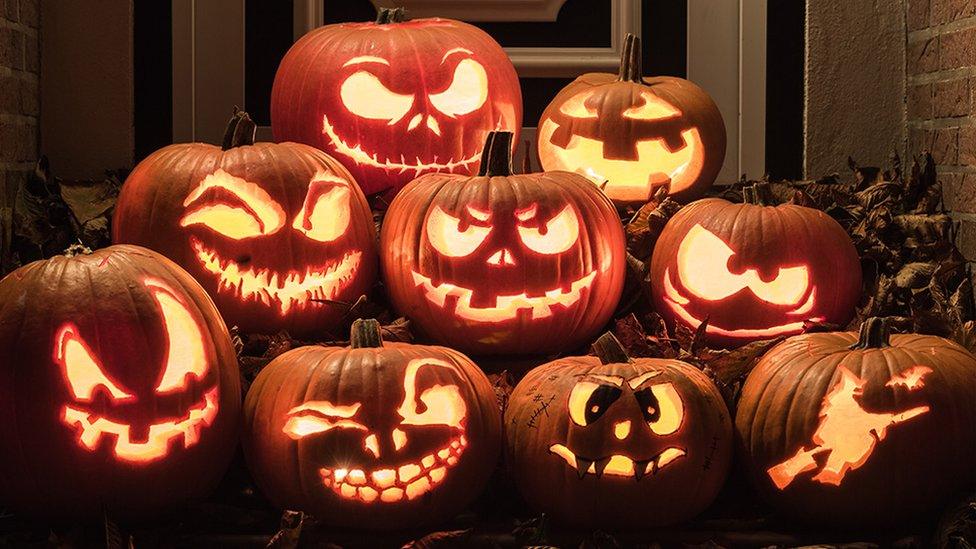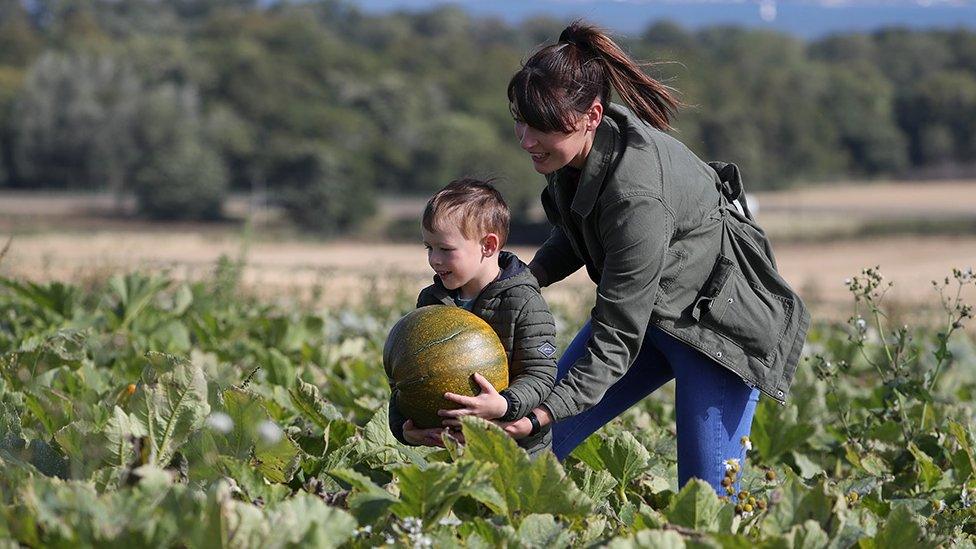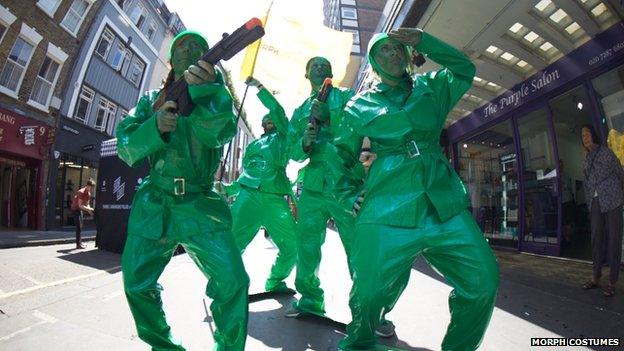Halloween spooked by scary virus
- Published

Covid -19 will hit Halloween spending, after several years of spiralling spend, getting close last year to half a billion pounds.
Much of the commercial spectacular has been imported from the USA, and has been adopted in Britain as the second biggest boozing 'event' of the year - until 2020 came along.
I've never understood why people pay good money to be scared. But they do.
Horror movies are reckoned to be among the most profitable - one reason being that they can be cheaply made.
No-one complains if the zombie apocalypse is badly acted, or if the ghosts are wearing cast-off bedsheets.
One reckoning of this century's American releases found that the 2004 movie Saw had a spine-chilling 11,000% profitability.
It also noted that every other form of cinema release has a strong correlation between commercial success and critics' ratings. In the horror genre, the more a film gets panned, the more people want to see it.
For me, that horror genre ceased having much attraction at around the point Scooby Doo and Shaggy nailed the dastardly monster in the big gothic castle:
Halloween back then was about chiselling out a turnip to make a lantern. But even in my distant youth, we were already absorbing America's Halloween.
Linus, the insecure sidekick to kindergarten philosopher Charlie Brown, each year, late at night on Halloween, could be found in the pumpkin patch, waiting.
Of course, the Great Pumpkin never arrived - a valuable early lesson in disappointment being guaranteed.
Soupernatural
But the Great Pumpkin has since landed on these shores. America's Halloween has put down deep commercial roots in Britain.
The turnip turned into a pumpkin, which somehow infected your cafe latte. Guising became trick or treat - a way to develop children's skills in running a protection racket.
And there was a lot of money to be made.
When Harry Potter cast his spell, it all got more expensive. Along came Instagram, and the pressure was building to look the part, with creepy costumes.
They're to help scare the wits out of unsuspecting adults, who need to fob them off with lots of sweets, preferably shaped as eyeballs and amputated body parts.

Visits to pumpkin farms like this one in Queensferry have become popular
Some of the biggest spending on Halloween - including well over half of pumpkins - is by adults with no children at home - grandparents, neighbours of kids, and those indulging in nostalgia. Retro-sweets are big.
Biggest of all is the pumpkin. Tesco's pumpkin supplier, in Cambridgeshire, grows five million of them a year. Quarter of households are expected to buy one this year, at a total cost of nearly £30 million.
While very agreeable and colourful in soups and pies only around half the contents are likely to be eaten. On the lookout for family activities that are socially distanced, a day out at the pumpkin farm, to pick your own, has been a fast growing attraction.
Creepy cocktails
The American way also meant this infected adult behaviour. The night when the spirits are shaken and stirred from the underworld became the trigger for a big booze-up down at the pub, with creepy cocktails. Alcohol marketers see Halloween, in a normal year, as second only to Hogmanay as a drinking event.
Adult party costumes are encouraged but optional, because at this level, it's nothing to do with tradition, it's merely an excuse.
One Scottish company that relies heavily on Halloween sales is Morphsuits. Three Edinburgh chums gave up conventional professional careers more than a decade ago, and last year turned over £15m.
Most of that is in selling Lycra that stretches from head to toe in bright colours or ever more terrifying designs. Halloween accounts for 60% of revenue - £9m last year.
For retail, it's also a major happening on the calendar - nowhere near Christmas, and still lagging Father's, Mother's and Valentine's Day. But check out the seasonal goods aisle of your local hypermarket, currently swathed in orange, black and plastic spiders' webs. That shelf space has gone spookily Halloween tat, because it's profitable.
Those who claim to be able count such things reckon the British spend on Halloween roughly doubled between 2013 and last year, and wasn't that far off £500m.
Fiendish festival
Of course, America still leads the way. Those who marked Halloween last year spent nearly $90 on average. Total, nearly $9 billion. And an obscene amount of candy consumed.
That spend was on course to fall by about 8% this year, with the Covid virus playing a gruesome and terrifying role as this season's invisible doorstep killer.
For a company that sells party gear, Morphsuits is finding this a very tough year, certainly in Britain, with demand down by at least half, according to co-founder Fraser Smeaton. Parents are buying costumes for kids, trying to keep things normal and fun.

Edinburgh-based Morphsuits has seen rapid growth in recent years
In the US of A, with mixed messages about infection risk, Morphsuit demand is holding up, and may even be ahead of last year.
Many, though, will keep observing this fiendish festival behind closed doors. More than half of Americans told market researchers they planned to decorate their homes for the big day.
Nearly half will carve a pumpkin, and nearly a fifth of Americans will dress up their pets. To me, that's really scary.
